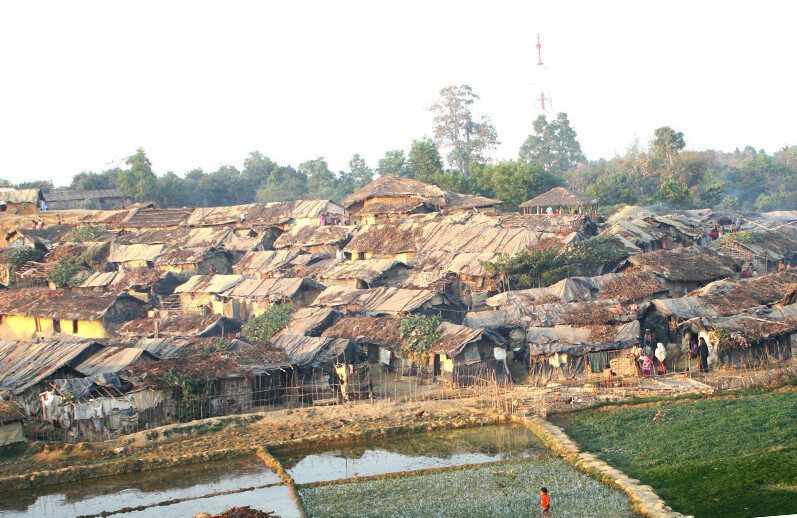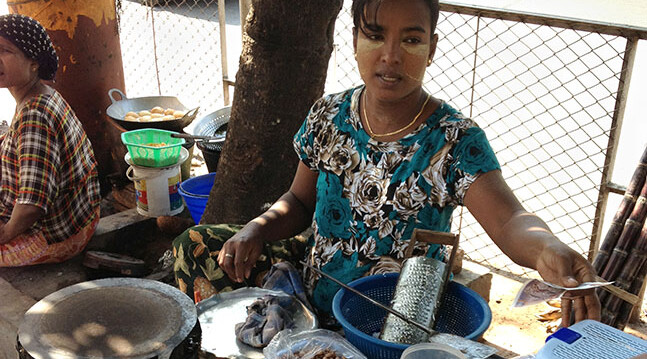In the midst of the COVID-19 pandemic, much of the world is glued to its screens. Through cell phones and tablets, people are getting regular updates on the virus's spread, checking in on family and in the worst cases, saying final goodbyes to loved ones.
But imagine being cut off, unable to access the Internet or use a cell phone. That is the stark reality for over 1 million Rohingya refugees living in makeshift camps in Bangladesh's Cox's Bazar.
Almost three years ago, my fellow Rohingya were expelled from Burma, in a brutal campaign of genocide that killed tens of thousands of Muslim minorities and sent almost a million innocent people into refuge in neighboring Bangladesh. These refugees have not only lived in poverty, but they have been subject to a state-sponsored information blockade, which denied them access to cell phones and the Internet.
Internet blockades are bad enough in normal times. But in the midst of the COVID-19 pandemic, they are deadly.
Last week, Cox's Bazar had its first confirmed case of COVID-19. There's a real risk that if left unabated, the virus will spread like wildfire through the largest refugee camp in the world. The only thing that will prevent an outbreak is proper communication and testing. But my people have neither. This is the reality on the ground:
Rohingya refugee camps are crowded and under-resourced. About 1 million people are crowded in unsanitary, impoverished conditions. Social distancing is impossible. If a COVID outbreak emerges, hundreds of thousands of vulnerable civilians could be infected. Yet in the case of such an emergency, victims would be unable to safely communicate with one another or the outside world. Without proper communication, the whole area is in danger.
For the past week, the camps have been in lockdown. Aid organizations are attempting to contain the virus, meaning aid workers are no longer staying in the camps and very few people visit. The policy is understandable. But thanks to the Internet blockage, with the aid providers go my community's only other means of communication with the outside world.
Those health workers from World Health Organization (WHO) and international NGOs that do visit the camps now lack the ability to search for health information online. Information about the virus and mechanisms to stop it gets to them late, and to refugees even later. Most Rohingya have not even heard of the WHO efforts and activities in the camps, much less any of their advice on preventing COVID-19.
In the camps, our testing is limited to symptom tracking—which, with asymptomatic and pre-symptomatic transmission, is simply not enough. And with the Internet blackout, we do not even have up to date information about new symptoms that are emerging. So what can be done?
First, the Bangladeshi government should end the Internet blackout and grant Internet access to enable those in the camps to learn what they can do to prevent the virus's spread. Rohingya in the camps would love to check on vulnerable loved ones still in Myanmar. This is not just a question of comfort, it is one of urgent need: the Internet enables access to life-saving information.
Second, international organizations could train more Rohingya volunteers to help make up for the lack of health support made necessary by this pandemic. Women would make especially valuable partners in camp awareness and prevention of coronavirus. After all, 70 percent of those living in the camps are women and children and 90 percent of cleaning and sanitation depends on female contribution. Women are already in the field, spreading awareness and any prevention measures that we can. My own NGO is training women to go from door to door, giving cleansing instructions and also reporting any relevant symptoms we find to health desks and centers. If properly trained, our efforts could have a powerful effect on the camps' chances. But we need to scale such support up and being able to communicate by phone would exponentially empower our efforts and keep all Rohingya safer.
Third, the Bangladeshi government, WHO, and international NGOs should immediately scale up the number of quarantine beds available to those in the camps. At present, the Bangladeshi government is setting up two isolation centers, one for refugees in Cox's Bazar and one for staff, amounting to a total of 100 quarantine beds to service the entire camp population. One hundred quarantine beds for a refugee population of over a million is not nearly enough.
In the camps, Rohingya already live in fear; violence brought us here, and that has left its mark. But before now, my community did not have a pandemic to contend with. The lack of safe sanitation and basic health facilities puts the camps at extremely high risk of a potential outbreak. Adding to that the additional burden of struggling to freely access information and communicate not only exacerbates refugees' fears, it also heightens the danger of a health catastrophe.


